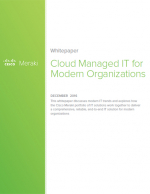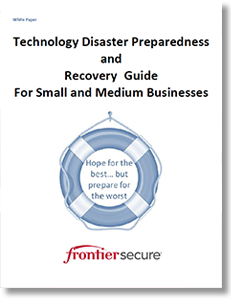Technology Disaster Preparedness & Recovery Guide
This white paper details how taking a few precautionary steps now, you will be able to avoid many potential technology and data disasters and be well prepared to deal with those you cannot avoid.
Technology disasters can devastate small and medium-sized businesses.
You risk down time, delay in product delivery, loss of client lists and client data, loss of consumer trust in your company, loss of customers, and you may face strict legal compliance requirements and potential lawsuits.
Any one of these risks translates into short- and potentially long-term loss of revenue.
You have a high incentive to protect your company and your customers from technology disasters, whether those are from natural causes, or from security and privacy threats.
Large companies and corporations have dedicated IT, operations, security and legal departments, and each of these has specific responsibilities for disaster preparedness, and responsiveness planning and execution.
Small and even most medium-sized businesses, on the other hand, don’t have the budget or the ability to dedicate resources for this purpose.
However, if you take a little time to understand the types of technology and human-related disasters your business might face, and are proactive with some relatively simple steps right now, you can significantly reduce your risks of a data disaster and its potential impact.
Being prepared for technology related disasters is not a one-time deal.
As your business changes, the landscape of risk changes, and time passes, you have to repeatedly evaluate how to prepare for risks and disasters.
This means you need to stay informed about security and privacy best practices and new laws regulating reporting of data breaches.
Consider subscribing to one of the many news feeds designed to keep small businesses apprised of changes so these notices are pushed to you rather than having to find time to go and look up the information.
Set calendar appointments to schedule recurring reviews of your company’s preparedness for technology related disasters, and take advantage of experts where you feel that you or your employees are coming up short.
Many local chambers of commerce and small business associations bring in speakers and provide experts to help you free of charge.
You may even want to hire a college student who is studying information security practices for a few hours every few months to help with system testing and employee training.
You will also need to understand any legal requirements associated with different types of technology related disasters.
This white paper does not provide legal advice; it just serves to remind you that legal requirements are in effect.
What’s Related




Favorites





